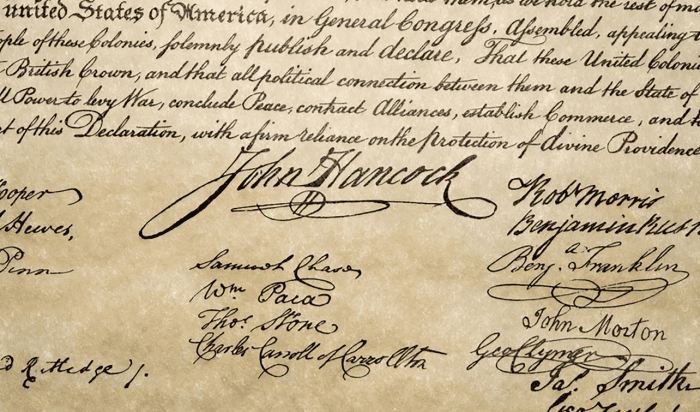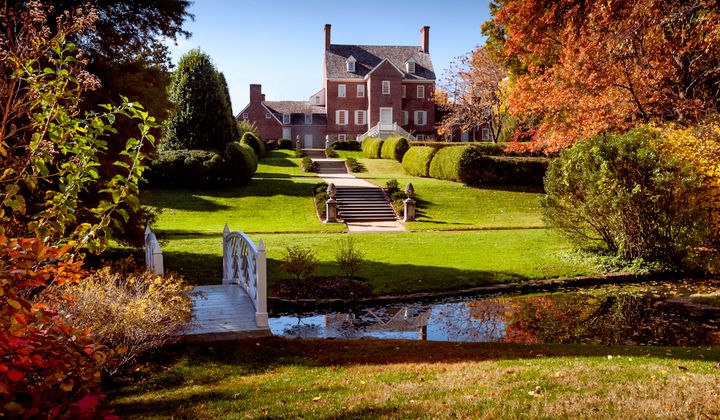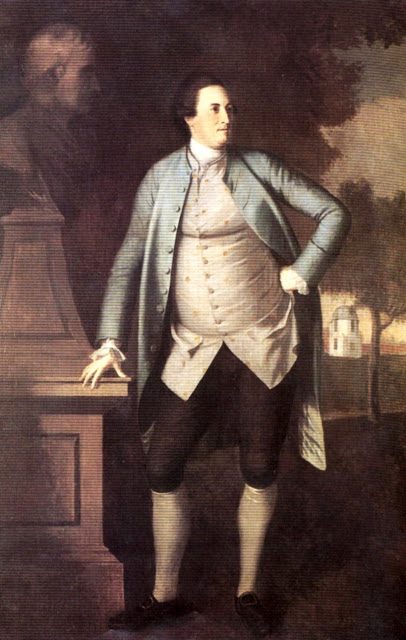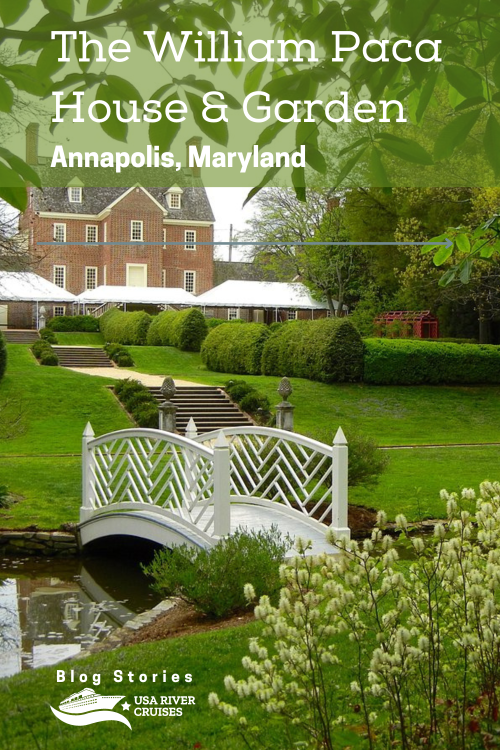
Annapolis, Maryland
By Dawn Woolcott
Impressive gardens, impressive house, impressive man. There is much to admire about the William Paca House and much to encourage you to visit. The large, imposing red brick house was built in the 1760s for a man who would become a signer of the Declaration of Independence, as well as governor of the state of Maryland. Just four days after his wedding, a young twenty-three year old recent college graduate, William Paca purchased two lots in Annapolis, Maryland on which to build his dream house. He came from a well-to-do long-established colonial family and so did his wife, Mary Chew. Together, they created a life together in this perfectly colonial home. He was a gifted young lawyer, ready to climb the ladder of success. He had attended college in Philadelphia, but his family had long roots in Maryland.
As he gained experience, his political career took off. He was soon asked to be a delegate to the First Continental Congress and was a signer of the Declaration of Independence – signing right underneath the hard-to-miss John Hancock. Most signatures on the document are grouped by state and the four delegates from Maryland all signed in the same area, with Pennsylvania delegate signatures to their right.

Unfortunately, his wife Mary did not live long enough to see her husband’s successes. She died in 1774 soon after childbirth. Together they had three children, but only one lived to adulthood. William remarried and lived in the house until his retirement and sold the house in 1780.

The house they had created included a stunning series of gardens and was well known for its beauty from the very beginning. A formal terrace garden sits close to the house for entertaining. A series of terraced gardens fill the red bricked walled garden. They are formal parterre designs that were popular in his day and can be best viewed from above for the full effect. The formal gardens are symmetrical, and filled with heirloom roses or fragrant flowers. As you wander further into the garden, you can explore the kitchen garden filled with heirloom vegetables, or the small orchard which helped feed the household.
Off in the distance though, the white summer house beckons you to explore further. You will soon cross a white lattice bridge over a fish-shaped pond that leads you towards a white summer house with a domed roof which might remind you of an astronomer’s observatory. The Pacas would entertain guests at the top of the summer house, where they could enjoy a view of the garden. No doubt the dark night sky would have been filled with stars on a warm summer’s night in the 18th century before the invention of electric street lights. Sit out in the garden overlooking the view and imagine the dark sky, billions of stars shining brightly, and peacefully quiet.

While you are free to wander the gardens, a guided tour of the house is a fee well worth the price of admission. The interior of the house has been impeccably restored to its original 18th century design and furnished perfectly. The house had changed hands several times over the 185 years since William left. Over the years it had been a private home, a rental, and a hotel. When the hotel closed in 1965, the house was purchased by the State of Maryland and Historic Annapolis to preserve this historic beauty and began a meticulous reconstruction and refurbishment.
During its time as a hotel, a large extension had been added to the back of the house, completely covering most of the back gardens. The extension had to be removed and the gardens completely restored. Restoring it back to its original design took quite an effort. For inspiration, they used old paintings of Wiliam Paca taking note of the background used in the image. Archaeological digs found buried border edges, and diaries kept of what flowers had been planted or were commonplace at the time helped keep the garden’s historic nature. The summer house was restored and based upon an image in one of Wiliam Paca’s portraits.
The two acre colonial garden is a treasure to explore. The picturesque terraced gardens are perfect in their symmetry, yet do not have an overly formal appearance that one sees in one glance. You are meant to wander and explore. When you visit Annapolis, make sure you do make time to wander and explore!

You can visit Annapolis on a history-filled cruise:
American Revolution Cruise
Roundtrip Washington, D.C.
- 10 Nights
- October 31, 2024,November 10, 2024,November 12, 2024--
4 more dates available. - From $6,910
- American Constitution
Chesapeake Bay-American Star
Roundtrip Baltimore, MD
- 6 Nights
- October 28, 2024
- From $4,835
- American Star
Chesapeake Bay-American Independence
Roundtrip Baltimore
- 6 Nights
- October 30, 2024,May 3, 2025,May 10, 2025--
1 more date available. - From $4,836
- American Independence
Pin this story to Pinterest:



